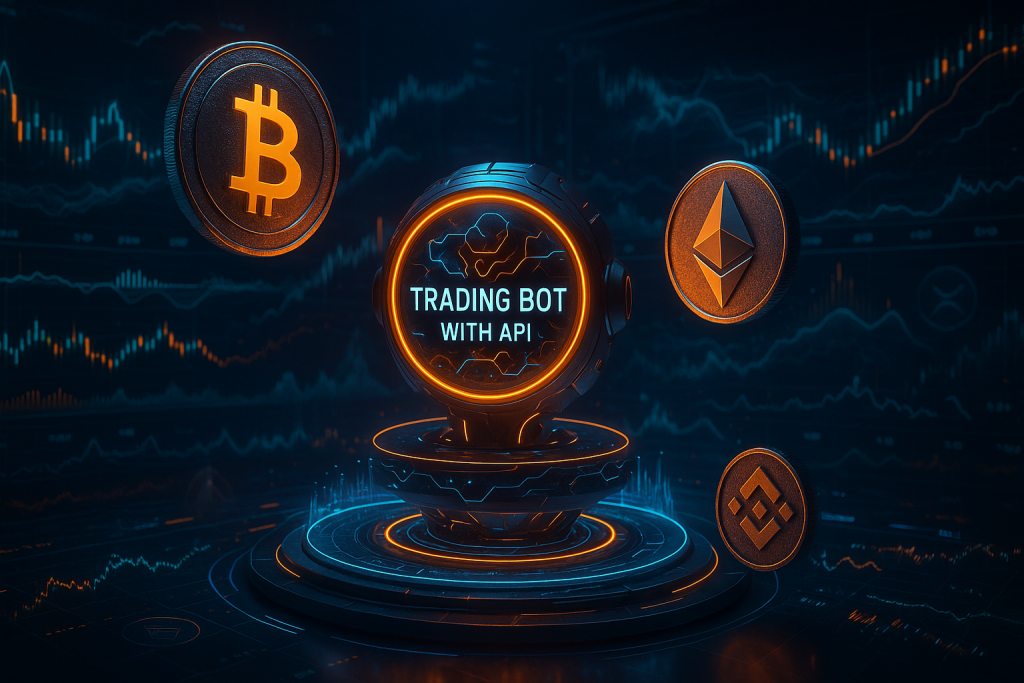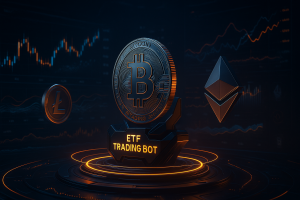Trading bot with API

Modern financial markets are characterised by high volatility, making them an ideal environment for automated trading solutions. Trading bots that utilise exchange APIs assist traders in automating buy and sell processes, minimising risks, and enhancing trading efficiency.
A trading bot is specialised software designed to execute trading operations automatically in financial markets. It interacts with the exchange via an API (Application Programming Interface), allowing it to receive real-time market data, analyse charts and quotes, and execute orders without direct human intervention. Such programmes not only save time but also eliminate the human factor-emotions, panic, or errors in data entry.
Using a trading bot offers numerous advantages, making it an attractive tool for traders.
Firstly, speed and precision. A trading bot can respond instantly to changing market conditions – a feat impossible with manual trading. It receives live price and volume data and executes orders almost immediately, reducing the risk of slippage. Even during periods of high volatility, the bot acts swiftly, not losing precious seconds that could cost significant sums.
Secondly, it removes the human factor. Emotions often lead to trading mistakes. Greed, fear of losses, or overconfidence can result in impulsive decisions that lead to losses. A bot operates strictly according to its programmed algorithm, avoiding emotional impulses and ensuring consistent strategy execution.
Thirdly, it can operate 24/7. Unlike humans, who cannot monitor the market constantly, a bot can work without pause, reacting to changes even overnight. This is particularly vital on markets that operate without weekends, such as cryptocurrency exchanges, where prices can fluctuate sharply at any moment.
The fourth significant advantage is customisation flexibility. Bots can be tailored to particular strategies, including complex algorithmic models that account for dozens of factors. For example, a bot might incorporate technical indicators, news signals, or even machine learning data, making trading more effective.
The fifth benefit is risk optimisation. Trading bots enable precise capital management by setting loss limits and securing profits through Stop-Loss and Take-Profit orders. This helps prevent substantial financial losses in adverse market conditions.
In summary, trading bots not only streamline the trading process but also make it more efficient, accurate, and predictable. However, it’s important to remember that even automated trading requires oversight and adaptation to changing market conditions.
How to create a trading bot?
Developing a trading bot requires technical expertise and market understanding. The process involves several stages:
- Selecting an exchange – first, you need to choose a platform offering an API (such as Binance, Kraken, Bybit, KuCoin, etc.).
- Obtaining API keys – after registering on the exchange, you receive API keys that provide secure access to your account for the bot.
- Defining the strategy – it is crucial to plan in advance which algorithm the bot will follow.
- Coding – developing the trading bot is most commonly done in Python, JavaScript, or C++.
- Testing – before deploying the bot on the live market, it must be tested with historical data or in a demo mode.
- Optimisation and deployment – after testing, the bot can be adjusted for current market conditions and launched on a live account.
Category news: Product and Bot Features
-

Bot for trading goods
In an era of rapidly advancing digital technology, businesses are increasingly turning to automated solutions that simplify and accelerate workflows. One such solution is trading bots – programs capable of replacing or complementing human labor in the sales process. Their integration into product trading offers a number of substantial advantages that significantly enhance business efficiency. […]
-

Real-Time Trading Bot
Real-time trading bots connect directly to trading platforms via API. They receive up-to-the-second data on prices, volumes, supply and demand, and use predefined algorithms to execute trades. These algorithms can be simple – for example, buying when the price drops and selling when it rises – or highly sophisticated, incorporating technical analysis, artificial intelligence, or […]
-

ETF Trading Bot
Thanks to rapid technological development, investing is gradually shifting from a domain reserved for professionals to an area of widespread public interest. Exchange-traded funds (ETFs), in particular, have grown extremely popular, offering diversification, transparency, and ease of purchase. Against this backdrop, a new tool is emerging – an ETF trading bot. ETF funds, or exchange-traded […]
-

Algorithmic trading bot
The use of trading bots in algorithmic trading has become a true breakthrough in the financial world. These intelligent systems offer a range of significant advantages, which is why they are increasingly replacing manual trading and opening up new horizons for market participants. Algorithmic trading is a method of automated buying and selling of assets […]
Latest news
-

Bot for trading goods
In an era of rapidly advancing digital technology, businesses are increasingly turning to automated solutions that simplify and accelerate workflows. One such solution is trading bots – programs capable of replacing or complementing human labor in the sales process. Their integration into product trading offers a number of substantial advantages that significantly enhance business efficiency. […]
-

SHIB
SHIB, or Shiba Inu, is a cryptocurrency that emerged in 2020, inspired by the popular meme coin Dogecoin. It quickly caught the attention of the crypto community thanks to its extremely low price per token and a marketing strategy centered around social media and fan engagement. Although SHIB was initially conceived as a “joke,” its […]
-

Real-Time Trading Bot
Real-time trading bots connect directly to trading platforms via API. They receive up-to-the-second data on prices, volumes, supply and demand, and use predefined algorithms to execute trades. These algorithms can be simple – for example, buying when the price drops and selling when it rises – or highly sophisticated, incorporating technical analysis, artificial intelligence, or […]
-

ETF Trading Bot
Thanks to rapid technological development, investing is gradually shifting from a domain reserved for professionals to an area of widespread public interest. Exchange-traded funds (ETFs), in particular, have grown extremely popular, offering diversification, transparency, and ease of purchase. Against this backdrop, a new tool is emerging – an ETF trading bot. ETF funds, or exchange-traded […]

